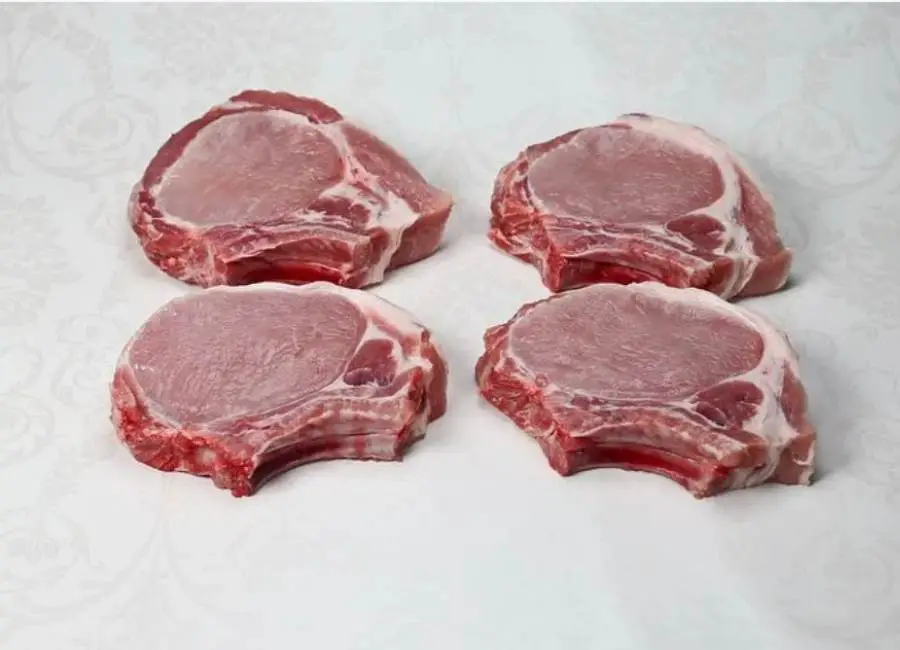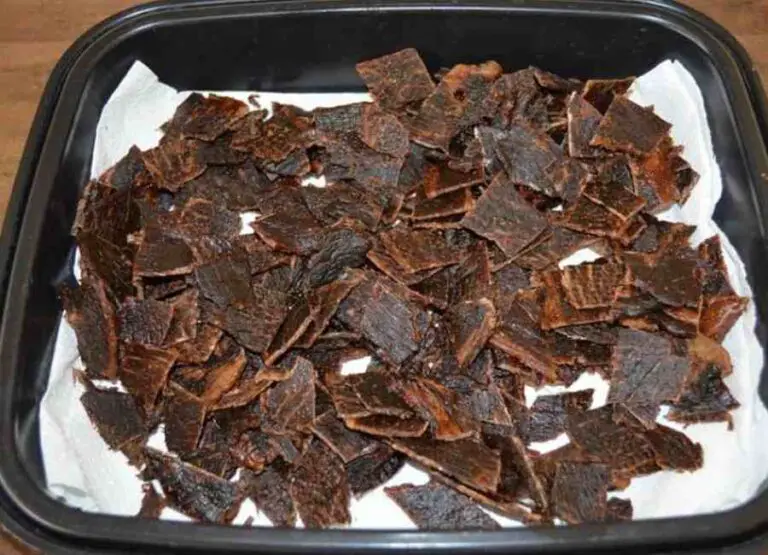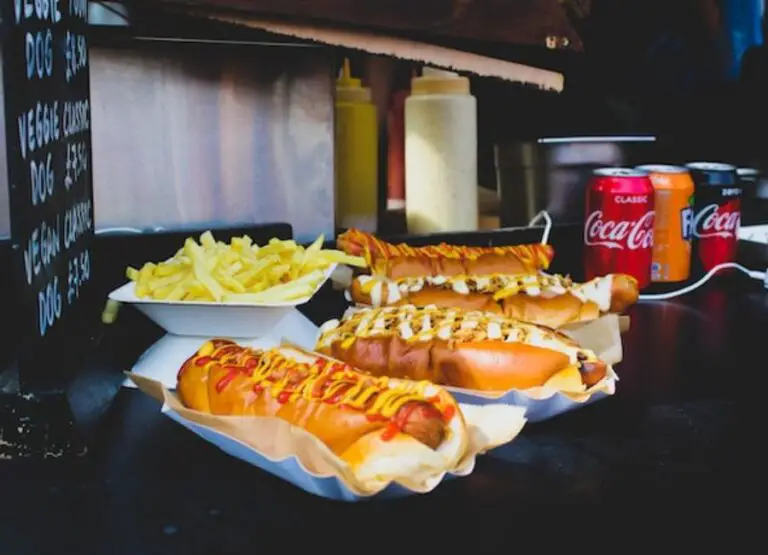What Meat Has The Most Iron (Answered)
Meat is a very good source of iron, but what meat has the most iron, that is exactly what we will be discussing in this article, we will outline other sources of iron for those who do not eat meat.
What is Meat?
Meat is the edible tissues from an animal that could live in sea, land, or air and is consumed as food, especially or mostly in solid form but could be converted into other forms.
Meat can include the flesh, fat, muscles, and offal of any animal. The offal is the internal parts of the animal such as the liver, kidney, and tongue.
According to the USDA, the United States is the largest producer of beef. The meat industry is actually one of the largest in the world.
What is Iron?
Iron is a mineral that is essential for the body to produce hemoglobin, which carries oxygen to organs and tissues.
A lack of iron leads to anemia, which can make you feel tired and lethargic.
The iron in meat is heme iron, which is more easily absorbed by the body than iron from plant sources.
There are a few types of meat that have the most iron, such as beef, pork, lamb, poultry, pork, fish, beans, lentils, spinach, eggs, dried fruit, and dark chocolate.
But we want to find out what is the exact type of meat that has the most iron content.
What meat has the most iron?
The meat that has the most iron content is the lamb spleen, because every 100 grams, the lamb spleen contains 41.89 milligrams of iron which is about 233 % of the total mineral % Daily Value found in 100 grams of lamb spleen. Therefore, the lamb spleen has the highest amount of iron among all meat.
These are from my extensive research and findings supported by Nutrition Value
Top three parts of meat with the most iron
Here are the top three meat with the most iron content;
- Lamb’s spleen contains 41.89 milligrams of iron per 100 grams.
- The beef spleen contains 39 milligrams of iron per 100 grams.
- Lamb’s liver contains 7.4 milligrams of iron per 100 grams.
How much iron should we eat?
According to Medical News Today, here is the recommended amount of iron we should eat;
Infants:
- From 0 to 6 months should take at least 0.27 mg of iron per day
- From 7 to 12 months should take at least 11 mg of iron per day
Children:
- Kids that are at least 1 to 3 years should take 7 mg of iron per day
- Children from 4 to 8 years should take at least 10 mg of iron per day
Males:
- Males from 9 to 13 years should take at least 8 mg of iron per day
- Males from 14 to 18 years should take at least 11 mg of iron per day
- From 19 years and older should take at least 8 mg of iron per day
Females:
- From 9 to 13 years should take at least 8 mg of iron per day
- From 14 to 18 years should take at least 15 mg of iron per day
- Ladies from 19 to 50 years should take at least 18 mg of iron per day
- Senior Citizens from 51 years and older should take at least 8 mg of iron per day
- During pregnancy, ladies should take at least 27 mg of iron per day
- When lactating between 14 and 18 years of age, take at least 10 mg of iron per day
- When lactating at older than 19 years should take at least 9 mg of iron per day.
Read more:
- Can Red Meat Cause Constipation: What You Should Know
- 12 Reasons Why Can Animals Eat Raw Meat & We Can’t.
Iron from plant sources
Here is the list of plant sources that are great sources of iron;
- Raisin bran (enriched)
- Instant oatmeal
- Beans (kidney, lima, Navy)
- Tofu
- Lentils
- Molasses
- Spinach
- Whole wheat bread
- Peanut butter
- Brown rice
Foods high in iron
Here is the list of foods that are great sources of heme and non-heme iron from both animal and plant sources, which are as follows;
- Chicken liver
- Oysters
- Clams
- Beef liver
- Beef (chuck roast, lean ground beef)
- Turkey leg
- Tuna
- Eggs
- Shrimp
- Leg of lamb
- Raisin bran (enriched)
- Instant oatmeal
- Beans (kidney, lima, Navy)
- Tofu
- Lentils
- Molasses
- Spinach
- Whole wheat bread
- Peanut butter
- Brown rice
What are some healthy sources of iron?
Here are the common best sources of healthy iron;
Shellfish
Shellfish are basically small sea creatures, these creatures consist of both mollusks and crustaceans.
Some examples of shellfish are oysters, clams, mussels, clams, scallops, mussels, and clams
Shellfish is one of the main food sources for people who live on the coastline but is also a very good source of nutrition for people with digestion problems or allergies.
Shellfish is one of the best sources of nutrition, it is particularly good for growing children because shellfish is very rich in Vitamin B12, vitamin D, and Protein.
Note that a 3.5-ounce (100-gram) serving of clams may contain up to 3 mg of iron, which is 17% of the DV.
Liver and other organ meats
Liver and other organ meats are high in vitamin K, a vitamin that has been linked to a lowered risk of dying from liver cancer.
“There’s not really much evidence that eating red meat helps with liver cancer,” said Mary St. Vincent, a registered dietitian and chief of the division of nutrition at Boston University’s School of Public Health.
The liver and other organ meats contain varying numbers of specialized enzymes that can break down protein molecules into smaller components for further digestion.
There are many such enzymes in the digestive tract, and they help break down about 70 different types of proteins.
Note that a 3.5-ounce (100-gram) serving of beef liver contains 6.5 mg of iron or 36% of the DV.
Legumes
Legumes are lower in saturated fats, fiber, and protein than meat and milk, but they also contain high levels of iron and magnesium, which work to balance and boost the body’s metabolism.
This means that you can achieve a leaner body shape by swapping steaks for pulses.
Legumes that have high protein content, and whole grains, like oats, are a good sources of B vitamins, zinc, folic acid, and iron.
Legumes are a great source of iron, especially for vegetarians.
One cup (198 grams) of cooked lentils contains 6.6 mg, which is 37% of the DV.
Pumpkin seeds
Pumpkin seeds are a good source of vitamin K, zinc, and manganese.
They’re also among the best sources of magnesium, and contain Calories: 120; Protein: 5 grams; Carbohydrates: 13 grams; Fat: 8 grams; Saturated Fat: 1 gram; Cholesterol: 80 milligrams.
Note that, a 1-ounce (28-gram) serving of pumpkin seeds contains 2.5 mg of iron, which is 14% of the DV.
Quinoa
Although you can eat quinoa in a variety of ways, like scrambled eggs or even rice, most Americans are familiar with the ground, whole grain, protein-packed ingredient through its use in ethnic cuisine.
What many people do not realize is that quinoa has been a staple in Native American cuisine for thousands of years.
Today, it’s a rich source of iron, zinc, B-vitamins, and the amino acid selenium, and is widely consumed in Europe, Mexico, and Central and South America.
Note that, One cup (185 grams) of cooked quinoa provides 2.8 mg of iron, which is 16% of the DV.
Tofu
Tofu, also known as bean curd, is a food prepared by coagulating soy milk and then pressing the resulting curds into solid white blocks of varying softness; it can be silken, soft, firm, extra firm, or super firm.
Beyond these broad textural categories, there are many varieties of tofu.
Note that, A half-cup (126-gram) serving provides 3.4 mg of iron, which is 19% of the DV.
Vegetables
According to Healthline, when measuring gram per gram, vegetables often have a higher iron content than foods typically associated with high iron, such as meat and eggs.
- Spinach
- Oyster mushrooms
- Broccoli
- Cabbage
- Brussels sprouts
- Spinach
- Kale
- Swiss chard
- Collard
- Beet greens
Note that, About 3.5 ounces (100 grams) of raw spinach contain 2.7 mg of iron or 15% of the DV.
Nuts and Seeds
Those who wish to increase their total daily iron intake should add the following varieties of nuts and seeds to their diet, as they contain the highest amounts.
- Pumpkin
- Sesame
- Hemp
- Flaxseeds
- Almonds
- Cashews nut
- Pine nut
- Macadamia nuts
References


![Can A High Protein Diet Cause Constipation [Answered]](https://foodcreeks.com/wp-content/uploads/2023/02/Can-A-High-Protein-Diet-Cause-Constipation-768x555.jpg)


![How Long Can Smoked Meat Sit Out [Explained]](https://foodcreeks.com/wp-content/uploads/2023/03/How-Long-Can-Smoked-Meat-Sit-Out-768x555.jpg)
![Is Lunch Meat Processed Food [Answered]](https://foodcreeks.com/wp-content/uploads/2023/02/Is-Lunch-Meat-Processed-Food-768x555.jpg)
![Do You Flip Meat When Smoking [Answered]](https://foodcreeks.com/wp-content/uploads/2023/02/Do-You-Flip-Meat-When-Smoking-768x555.jpg)